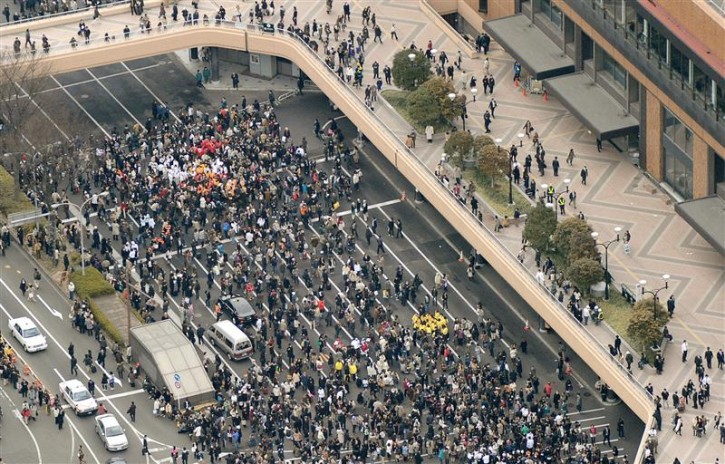 Japan – Tens of thousands of stranded people roamed the streets of Tokyo or holed up in offices and train stations as the capital’s usual bustling traffic came to a standstill Friday after the biggest earthquake in modern Japanese history struck.
Japan – Tens of thousands of stranded people roamed the streets of Tokyo or holed up in offices and train stations as the capital’s usual bustling traffic came to a standstill Friday after the biggest earthquake in modern Japanese history struck.
Subscribe to our Daily Roundup Email
The magnitude-8.9 temblor off Japan’s northeastern coast shook buildings in the capital, left millions of homes across Japan without electricity, shut down the mobile phone network and severely disrupted landline telephone service. It brought train system to a halt, paralyzing the daily commuter flow of more than 10 million people.
Akira Tanaka, 54, a restaurant worker, was among those who just gave up and decided to walk home — to suburban Saitama, 12 miles (20 kilometers) north of Tokyo, an endeavor he has never tackled before.
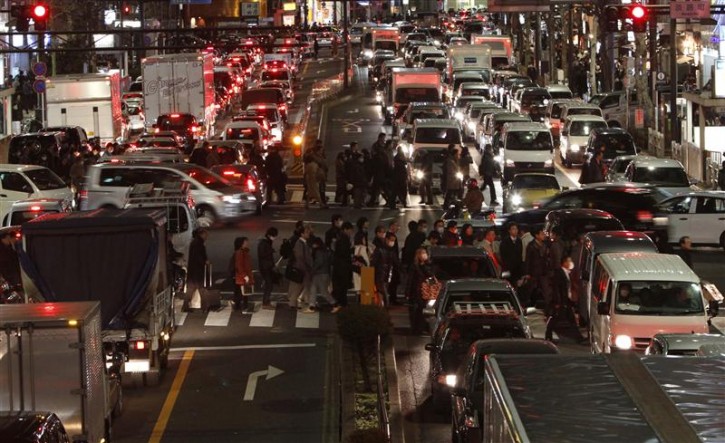
“I’ve been walking an hour and 10 minutes, still have about three hours to go,” he said. “This is the kind of earthquake that hits once every 100 years.”
Phone lines were crammed, preventing some calls and messaging from getting through. Calls to northeastern Japan, where a 23-foot (7-meter) tsunami washed ashore after the quake, often failed to go through, with a recording saying the area’s lines were busy.
Unable to rely on their mobile phones, lines of people formed at the normally vacant public phone booths dotting the city.
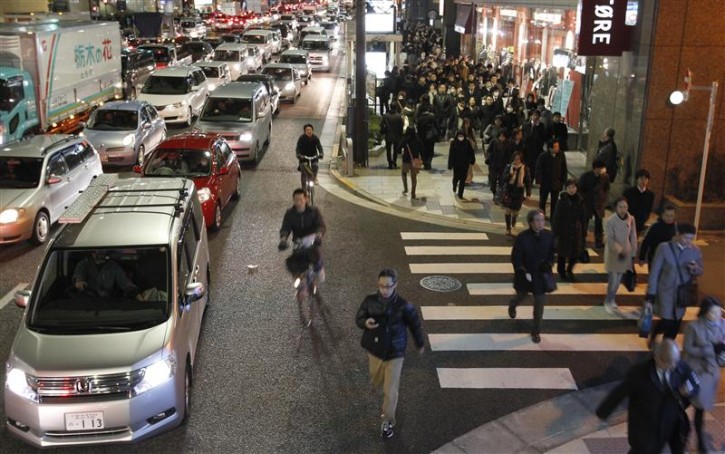
Japan’s top telecommunications company Nippon Telegraph and Telephone Corp. set up an emergency phone line and a special Internet site for people to leave messages for families and friends to inform them of their safety.
Tokyo commuter trains and subways, as well as the superfast bullet-trains, all shut down, according to East Japan Railway Co. A handful of subway lines resumed service were back up, but only after six hours.
Earlier in the day, people continued to pack stations, hopeful that the trains would start again. Trains in Tokyo run like clockwork and when they have temporary problems, they usually are running within an hour.
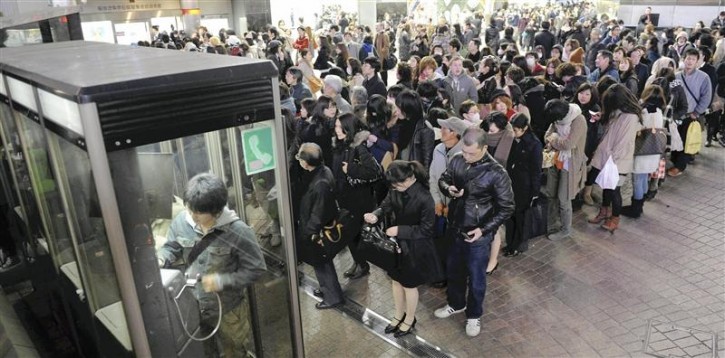
But the company announced late in the day that services would not resume for the rest of the day, sending a crowd pouring into the streets.
Government spokesman Yukio Edano advised commuters to stay where they were to avoid injuries. But people flooded train stations and stood in long lines for cabs, trying to find a way home.
Yokohama Arena, a concert hall in a Tokyo suburb, near a major bullet-train station, which handles not only Tokyo commuters but travel throughout Japan, was offered as an emergency place to stay overnight.
“There has never been a big earthquake like this, when all the railways stopped and so this is a first for us,” said arena official Hideharu Terada. “People are trickling in. They are all calm.”
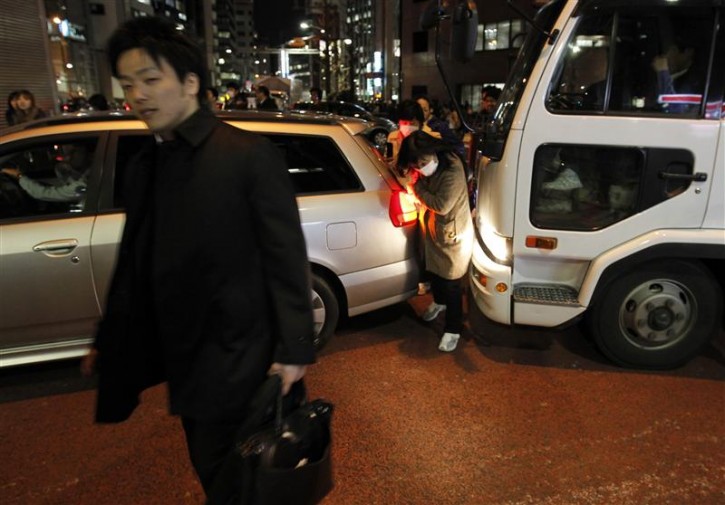
Yokohama city hall officials put up posters at stations, inviting people to stay, and planned to provide blankets and other amenities, he said.
“I thought I was going to die,” said marketing company employee Koto Fujikawa, 28, who was riding the monorail when the quake hit, and had to walk to the nearest station, picking her way along the narrow, elevated tracks. “It felt like the whole structure was collapsing.”
